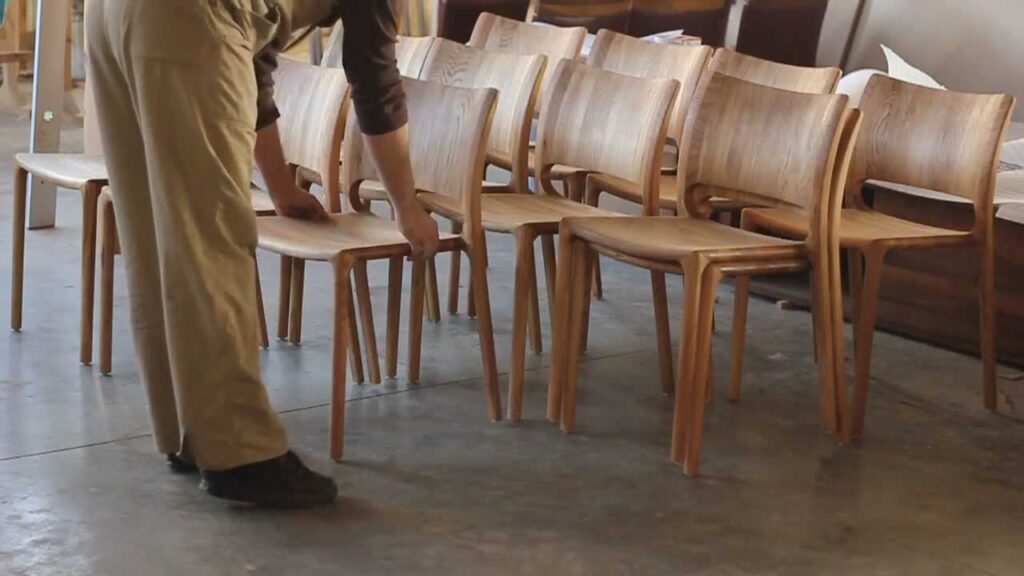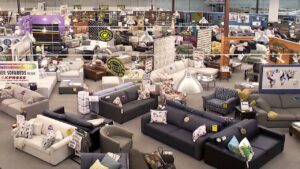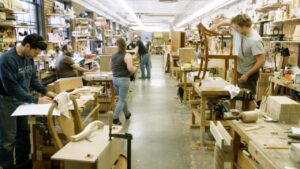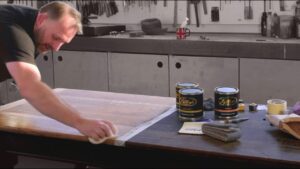
The process of custom furniture manufacturing is extensive and involves the selection of suitable materials for your furniture. The materials are then sawed to the required size and molded or grooved. For more intricate designs, the materials are carved and finished by hand. Next, the pieces of furniture are assembled, including the bases, legs and upholstery. The finishing process includes spray polishing and staining. A skilled crew finishes the entire process. In addition to this, the final step in the manufacturing process is shipping and installing your furniture.
Traditional furniture manufacturing companies generally promote their products through investment promotion and media advertising. However, these marketing costs are quite high. With the help of customized furniture manufacturing companies, their products can quickly gain consumer recognition and be sold smoothly, reducing the intermediate sales link and ensuring that various enterprise expenses are controlled. Therefore, custom furniture manufacturing is a highly desirable choice for any business. Here are some advantages of this process. To begin with, the custom furniture manufacturing process involves confirming your request. Once you’ve done that, you’re ready to proceed to selecting your supplier.
When selecting your supplier, ensure that you select a custom furniture manufacturer. Customized furniture manufacturers can incorporate a variety of different materials and patterns. Their charges for similar products are similar. However, when you choose a custom furniture manufacturer, you’ll get a unique piece of furniture that’s tailored to your specifications. The cost of custom furniture depends on the materials used. Fabric can range anywhere from $4 to $200. If you’re interested in learning more about this industry, check out our website today!
Another advantage of custom furniture manufacturing is that the pieces are better quality than those mass-produced. The quality of the furniture is generally higher, as the process is not rushed. Each component is checked for fit and quality before it leaves the factory. While store-bought furniture is often made on flimsy frames, custom furniture is constructed on solid frames. The materials are often high-grade. It’s difficult to compare the quality of custom furniture with a standard showroom, but it’s worth it.
In addition to the advantages of custom furniture manufacturing, there are some disadvantages. The manufacturing process itself is a time-consuming process, and you should ensure that you have enough time to complete a piece before it’s delivered to your customer. It takes six weeks or more for a custom furniture piece to be completed. During the downturn, it’s likely to be difficult for you to find new customers. During a downturn, you may have to increase your marketing efforts to get more customers.
Lastly, custom furniture is one-of-a-kind. Its design reflects your personality and is built to fit a room’s layout. Creating a custom piece can be exciting. A one-of-a-kind piece of furniture can also become an heirloom. If you have an interior design sense, custom furniture can help you make the most of your space and satisfy your personal tastes. The end result is a high-quality, unique piece of furniture that you can cherish for years to come.
Mattress production equipment
The latest trends in mattress production machinery are a focus of BedTimes’ October issue, and the article explores how modern production technology is impacting bedding and mattresses. We spoke to representatives from several equipment manufacturers and asked them how they plan to improve their bottom line. In general, they agree. A few things to keep in mind when investing in new mattress equipment include the ability to increase output, reducing labor costs, and automating production. But what about the future of manufacturing?
The next piece of equipment to consider is the cutting process. The machine must be capable of cutting sticky gel foams, which can coat band knives and gum up the inner workings of machines. Baumer has developed equipment for cutting these difficult-to-cut materials. The result is a machine that has an excellent cut quality while reducing labor costs. The company’s foam-cutting machinery features accurate sewing movements and a simple, automated operation.
Another piece of equipment to consider is the quilting machine. An excellent choice is the Gribetz Axiom high-speed quilting machine, which combines a tack-and-jump approach with a single needle scrolling machine. Alternatively, a chain-stitch multineedle quilter such as the Mammut VMK CNC chain-stitch machine is a reliable option that can stitch all types of fabric together. An Atlanta Attachment 1355 Border Quilter allows for greater flexibility in other mattress components.
There are many different options for mattress assembly systems, each varying in efficiency and cost-savings. Depending on your budget and production scale, you can choose an appropriate system. For example, Atlanta Attachment’s 1349 Automatic One-Piece Border Workstation creates a pillow-top mattress border with one piece, while the company’s 1347D French Pillow-Top Border Workstation is designed for traditional two-sided mattresses.
The final step in mattress production is packaging. You can purchase spring bed cores if you do not want to create your own. The spring bed core is then wrapped in a fabric that is applied to the top and bottom of the mattress. A pneumatic clinching tool M66 secures the spring bed core to the frame wire. A C-ring gun fastens the fabric to the bed core. Finally, the mattress is packed and shipped.
Additional mattress production equipment includes sewing machines for seams, quilts, and mattresses. An automatic overlock quilting machine is available for those who need a bespoke mattress product. Specialized sewing machines are also available, including a handle-sewing machine, a pillow top sewing machine, and an embroidery machine. A professional machine manufacturer will be able to provide you with the best possible machine for your mattress production needs. So, whether you’re looking for a single machine for your business or a full line of equipment, Lianrou is sure to have the right machine for your needs.
Foam mattress manufacturing
The early days of foam mattress manufacturing were fraught with limitations due to cost, time, and quality. Then, new technology emerged that improved the packaging process and used foam and new materials to make the beds more durable. As demand for these beds increased, throughput became even more important to ensure that supply chains could keep up with the growing demand. During this time, a good assembly team could produce one mattress every minute. During the last decades, the foam mattress manufacturing industry has made tremendous strides.
The foam mattress manufacturing process can be divided into four main sectors, each of which has five work stations. The process begins in a cutting sector with two parallel production lines. Then, a high-density polyurethane foam composition of 10% A is added to the mix. The foam mattress is then cut out using a laser cutter and finished with double-sided tape. This method is easy to use and has numerous advantages. Further, it produces a mattress with a smooth cut edge that reduces defect rates.
Unlike spring mattresses, foam mattresses are more affordable than their spring counterparts. The comfort level of the foam mattress is also higher. The overall production cost for a foam mattress is less than a million dollars. The price depends on how much foam is used, how it is made, the machinery used, and how much labor is required to produce the product. After these steps, the foam mattress is ready to be sold to various retailers and online.
Earlier, the foam mattress industry was a complex process. The most important aspect of foam mattress manufacturing is the materials used. This is because foam mattress manufacturing involves a lot of raw materials, and a lack of innovation in between those stages would result in a low-quality product. In the process, the foam is molded to meet the specifications of the consumer. This process requires a high level of precision and attention to detail. A low-density foam mattress would have a low ILD rating, and a high-density foam would have a higher number than a core made of a more durable material.
Throughout the years, foam mattress manufacturing has been advancing at an impressive rate. Newer versions of foam are made with viscoelastic materials to regulate body temperature. As the temperatures rise, the foam softens and sinks more. This makes it a more comfortable bed for the sleeper. As the foam has become increasingly popular, the density of memory foam mattresses has increased as well. Despite the increased density of memory foam, it may still be hard to find a foam mattress of the right density.
Most reputable foam mattress manufacturers use materials certified to governmental standards. These standards set limits for the safe use of chemicals in foam products. Consequently, a foam mattress containing certain chemicals is safe for people to use. Many companies “proudly” use these materials in their beds. So how does foam manufacturing make it possible? It all starts with the raw materials used in the manufacturing process. The main difference between foam and latex is the quality. If you’re worried about the chemicals in the foam, choose a foam mattress that is made from sustainable materials.
Latex mattress manufacturing
The process of latex mattress manufacturing begins when the natural rubber tree is harvested. After harvesting, the latex is placed in a vacuum-sealed mould. Air is removed from the mould, and small amounts of CO2 are added via pins. The latex is then subjected to a rapid coagulation process, which causes it to foam up. This foamy latex is then molded into a mattress.
This process produces a highly durable and comfortable latex mattress. First, liquid latex is whipped until it reaches a soft consistency. Next, the whipped sap is put into a mold and baked until it holds its shape. The resulting product is a viscous, foamy paste that forms a core. Due to its density, Dunlop latex is often used in support cores. This method tends to be less expensive than Talalay latex.
Because the process uses natural rubber tree, it also creates jobs in developing nations. In addition to that, it is free of petrochemicals and artificial ingredients. As a result, consumers will not have to worry about burning down their homes. This process also produces mattresses with the highest quality natural latex available. That’s why many people choose natural latex mattresses over synthetically produced ones. But how do you know which is the best choice?
In order to manufacture a high-quality latex mattress, the rubber tree is harvested. The sap is converted to a rubber product. It’s important to note that natural latex is not 100% sap; some curing agents are necessary. Natural latex has high bounce and softness. Synthetic latex, on the other hand, is made with chemical inputs. Synthetic latex is usually derived from petroleum. Consequently, the price of the product is higher than that of natural latex.
The process of latex mattress manufacturing involves pouring liquid latex into moulds. The mixture is then vacuum-sealed. Carbon dioxide is then blown through the mixture to harden it. Finally, the mattress is baked at a temperature of 130 degrees. The latex mattress is hypoallergenic, making it a great choice for allergy-prone individuals. You can order a high-quality latex mattress from a reliable company, or even a manufacturer specializing in the product.
The original method of latex foam manufacturing, called the Dunlop method, uses a foaming machine to whip the sap into a froth. The foam is then poured into a mould and baked. This method allows the manufacturer to make the whole mattress at one time, saving them the time and energy of making several individual mattresses. The Dunlop method is often used in the production of natural latex mattresses. It is known for its quality and is the most traditional way to produce natural latex mattresses.
One method of latex mattress manufacturing uses a polymer that is derived from rubber trees. It is then mixed with air and whipped into a foam consistency. The mixture is then poured into a mold similar to the Dunlop method. This process results in a firmer, more supportive mattress than a polymer. As latex is a natural material, it is highly resistant to molds and is great for allergy sufferers.
Furniture manufacturing process
If you’ve ever wondered how a piece of furniture is made, the manufacturing process is an integral part of this process. Furniture manufacturers must be inventive in their designs so that the furniture will be useful for many different purposes. A piece of furniture that you use during the day may also double up as a bed for the family dog at night. The possibilities are endless! Here’s a look at how the manufacturing process works. You might be surprised by what you find.
The first step in furniture manufacturing involves working drawings. Working drawings are the basic preliminary of any piece of furniture. Large furniture companies always have a specialized department for this. Working drawings are full-size versions of small-scale sketches provided by the designer. The designer can also make full-size detailed drawings. Many large furniture firms employ draftsmen to work out all the details of a piece. In small-scale drawings, the designer will provide the dimensions and advice on the decorative details. Hand craftsmen, on the other hand, usually perform the whole process by themselves.
After the lumber has been dried, it will go through a rough milling stage. This involves cutting, planed, and glued pieces of lumber that are used for furniture. A company that handles the entire process from start to finish can control quality, and ensure a high level of consistency. Afterward, the product is sent to a finish mill, where it is cut into specific pieces for the individual pieces of the furniture and for specific designs.
Once the design has been finalized, a furniture manufacturer can begin the process of producing the product. The manufacturing process begins with a sketch of the final product. Then, the material is cut to size and moulded, grooved, and planed. A hand carver may be required to rough sculpt designs that are intricate. Gluing the drawers and door frames is the next step in the process. After this, spray polishing and staining are used to complete the finished product.
3D modeling is a great tool for furniture manufacturers. By incorporating 3D services into the manufacturing process, manufacturers can see the finished product in an entirely new light. 3D models are an effective tool for presenting the finished product to prospective customers and partners, and can also help with the development of a brand. There are several reasons why 3D modeling can be an integral part of the furniture manufacturing process. Aside from speeding up the production process, 3D models can save you time and money by improving the quality of your final product.
In the manufacturing process, wood is selected as the primary material. The selection of wood will depend on what the furniture will be used for. Heavy furniture will require tough, durable materials such as hardwoods. These materials are able to withstand daily use, support weight, and be polished or waxed to retain their colour. On the other hand, softwoods are ideal for kitchen cabinets, supporting beams, window frames, and outdoor decks.







